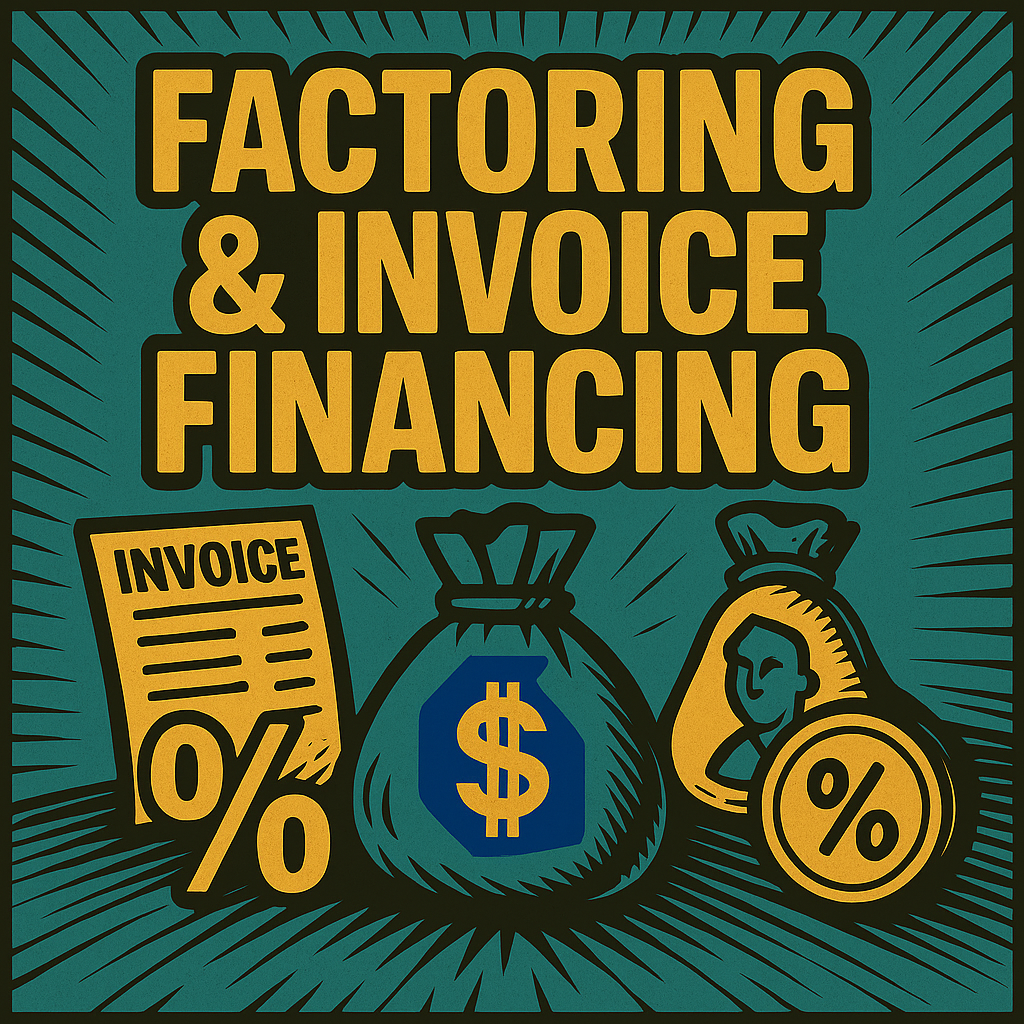
Factoring & Invoice Financing
“The Shortcut from Sale to Cash.”
Turning Receivables Into Immediate Cash Flow
Factoring and invoice financing are forms of accounts receivable financing — ways for businesses to unlock cash that’s tied up in unpaid customer invoices.
Instead of waiting 30, 60, or 90 days for payment, companies can convert invoices into working capital now — either by selling them (factoring) or borrowing against them (invoice financing).
Factoring vs. Invoice Financing
| Feature | Factoring | Invoice Financing |
|---|---|---|
| Structure | Business sells invoices to a factoring company at a discount. | Business borrows against invoices using them as collateral. |
| Ownership of Receivables | Factor owns the receivable and collects from customers directly. | Business keeps ownership and collects payment from customers. |
| Control / Customer Contact | Factor may interact directly with customers. | Business maintains customer relationships. |
| Advance Rate | Typically 70–90% of invoice value upfront. | Typically 70–90% of invoice value as a loan. |
| Repayment | Not applicable (invoice sold). | Loan repaid when customers pay. |
| Cost | Discount fee or factoring charge (1–5% per month). | Interest + service fee. |
In short:
Factoring = Sell the invoice.
Invoice Financing = Borrow against it
For Business Owners:
- Smooths cash flow during long payment cycles.
- Frees working capital for payroll, inventory, or growth.
- Offers an alternative when bank loans are hard to qualify for.
For Lenders:
- Provides a flexible short-term lending tool for clients.
- Reduces credit risk by using receivables as collateral.
Example Scenario – Factoring
A manufacturer issues a $100,000 invoice payable in 60 days and sells the invoice to a factoring company.
The factor advances 85% ($85,000) immediately.
When the customer pays in full, the factor remits the remaining 15% minus a 3% fee ($3,000).
The business gets quick cash flow without waiting two months for payment.
Example Scenario – Invoice Financing
A design agency has $100,000 in invoices due in 60 days. The agency uses those invoices as collateral with a lender.
The lender advances 85% ($85,000) immediately.
When the client pays the invoice in full, the agency repays the lender $85,000 plus a 2% fee ($1,700).
The business keeps control of customer relationships while using future payments to unlock working capital today.
Costs & Considerations
Fees: Usually 1–5% per month, depending on risk and volume.
Customer Credit Quality: Strong customers = better rates.
Recourse vs. Non-Recourse:
Recourse factoring: Business must repay if customer defaults.
Non-recourse factoring: Factor assumes default risk (higher fee).
Perception Risk: Some customers may view factoring as a sign of tight liquidity — manage communication carefully.
Benefits
✅ Converts receivables into cash quickly.
✅ Scales automatically with sales (more invoices = more funding).
✅ Easier to qualify for than traditional loans.
Drawbacks
⚠️ More expensive than bank lines of credit.
⚠️ Potential impact on customer relationships.
⚠️ Not ideal for businesses with few or inconsistent invoices.

Takeaway
Factoring and invoice financing act as cash flow accelerators — they unlock money that’s already earned but not yet in hand. By trading a discount or fee, businesses can convert receivables into usable cash immediately.
They’re especially powerful tools for:
Growth-stage companies that need capital to keep up with rising demand.
Seasonal businesses that experience long payment cycles or cash crunches during peak inventory builds.
Small and midsize firms that may not qualify for traditional bank credit but have strong, creditworthy customers.
In short, factoring and invoice financing provide a mechanism to smooth the rhythm of business cash flow — keeping operations steady, payroll covered, and growth funded — even when customers take their time to pay.

